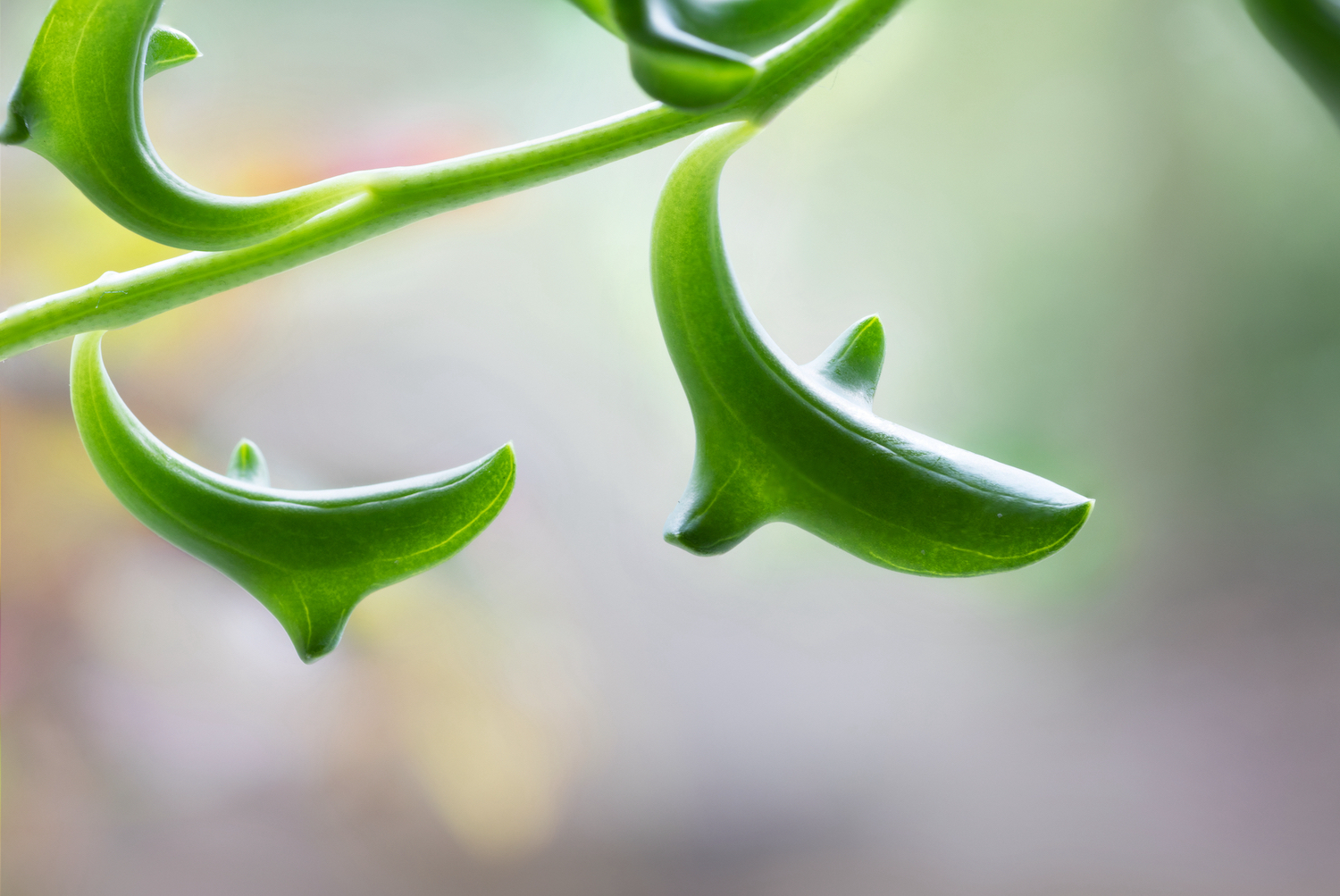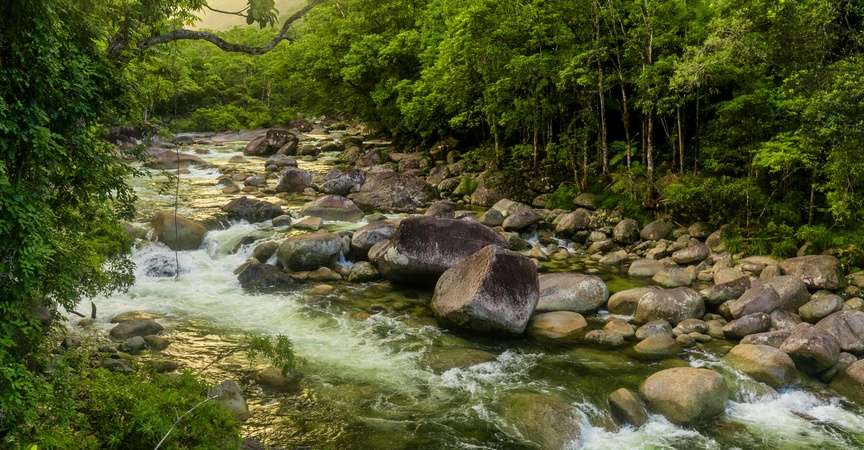When I was a kid, my mom took our family to see Disney’s Pete’s Dragon, a musical fantasy film that featured a large green animated dragon named Elliott who had the ability to make himself invisible. I fell in love with Elliott’s expressive face, floppy ears and pink tuft of hair. Then years later, while browsing around a San Francisco flower shop, I happened upon an orchid that resembled his face to a T. It was a slipper orchid, a pouch-shaped flower that apparently others have dubbed the “Pete’s Dragon Flower” as well, for its uncanny likeness to the animated creature.
Strangely, the slipper orchid is not the only type of flora that resembles an animal, fictional or otherwise. For some flowers, it’s a type of mimicry—an evolutionary process that helps them to survive. For others, their resemblance to a certain fauna is simply a coincidence. However, the bulk of these impersonating plants happens to be orchids, which is an oddity all its own. In fact, Nat Hab’s Natural Jewels of Costa Rica, a 10-day expedition that includes a visit to Monteverde Cloud Forest Biological Preserve, home to the highest diversity of orchids on Earth, offers participants the chance to see some of these peculiar species first-hand.
In the meantime, we’ve rounded up some of the most notable plants and flowers that mimic the shapes of wildlife, so you can know what to look for. From the forests of northeastern India to the wilds of southern Australia, here are 11 of our favorite “flora in disguise.”

Parrot Flower (Impatiens psittacina)
Despite its orchid-like appearance, the parrot flower is a balsam, an annual cup-shaped flower that grows on thick, upright stems. This particular species comes from the forests of Southeast Asia, including those in north Thailand, Myanmar and northeastern India, and produces flowers that look like parrots caught mid-flight. So much so, in fact, that many people thought the original pictures of them had been photoshopped.
With their reddish-purple petals representing the body, a light green hook, and a lower sepal serving as a beak, each blossom is a joy to look at, but the plant itself is more akin to a weed.
Parrot flowers are a rare and protected species, only blooming for a few weeks annually between October and November.

White Egret Orchids (Habenaria radiata)
The delicate blooms on this lovely terrestrial (ground-growing) orchid appear like a snowy egret with its plumage on full display. Each flower has small green leaves and fringed petals that spread like wings. They’re native to the hardwood scrub and wetland marshes of Japan, Korea, China and Russia.

Bee Orchids (Ophrys apifera)
Bee orchids are a tricky flower. With its velvety lip purposely resembling a female bumblebee and the emission of a sweet-smelling scent, the bloom lures male bees in for mating, only to con them into pollinating the flower instead. These terrestrial orchards have distinct bee markings, including pink sepals that look like wings.
Rabbit Succulents (Monilaria obconica)
These adorable little succulents, native to South Africa, sprout two little stems that look exactly like bunny ears. The ears get longer and longer over time, but the growing process for this particular plant is one that’s extremely slow.

Monkey Face Orchid (Dracula simia)
Native to the high cloud-filled mountains of South America, including those in Ecuador and Peru, the monkey face orchid is a rare one. When it blooms, the flower looks just like the face of a tiny monkey, with different facial expressions to boot. The orchid’s column (its reproductive organ), lip, and petals all come together to create this uncanny resemblance, which is most similar to a baboon in appearance.

Flying Duck Orchids (Caleana major)
The red, purple and green blooms of the flying duck, a small orchid that grows wild in eastern and southern Australia—especially in eucalyptus woodland and swampy areas—are named appropriately. Appearing like tiny-billed waterfowl in flight, the flowers have evolved over time to attract male sawflies, trapping these pollinators in their “beaks” and tricking them into fertilization. The first-ever large duck orchid was found at the site of the Sydney Opera House.
Hummingbird Flower (Crotalaria cunninghamii)
Also known as the green bird flower, the hummingbird flower is a perennial shrub that can grow up to 9 feet tall. The bloom itself resembles a hummingbird with a sweeping wing and a beak that’s feeding on the plant’s central stalk. It grows wild along the sandy dunes of inland northern Australia and is a member of the legume family, along with peas, soybeans and alfalfa.

Dove Orchids (Peristeria elata)
Panama’s national flower, the dove orchard, also goes by the monikers “Flower of the Holy Spirit” and “Holy Ghost Orchard” for its distinct white blooms, inside which is a small petal formation that resembles a dove. What’s even more interesting about this large terrestrial orchid—which also grows in Costa Rica and Trinidad, typically by the edge of hardwood forests—is its unique beer scent.

Dolphin Succulent (Monilaria obconica)
The Dolphin Succulent is a hybrid of a candle plant or “hot dog cactus”—a blue-green succulent with stems that oddly resemble linked sausages—and a string-of-pearls vine, recognizable by its tiny pea-shaped leaves. Today they produce this trailing plant and its plump leaves that look like tiny dolphins jumping straight out of the flower pot. Each leaf is shaped like a half-moon and has its own protruding “fin,” just like the highly intelligent sea creature.
Moth Orchid (Phalaenopsis)
The moth orchid is a thick-leaved plant that grows along tree trunks and branches in the tropics of India, parts of Asia and Australia. The interior of each flower looks like a small moth. What’s especially cool about these common orchids is that they’re long-lasting and easy to grow. They even like to spend warmer months outside, which may be a great way of enhancing your backyard habitat.

Fly Orchid (Ophrys insectifera)
A type of terrestrial orchid that grows in clusters, fly orchids are another one of those floral tricksters: attracting male digger wasps through their sweet, intoxicating scent and flowers that resemble flies. Each blossom has a velvety lower lip and a purplish-brown color, additional enhancements that dup the wasps into trying to mate with them, pollinating the flowers in the process.

























